Schrenk tulips: a brief description of the species and features of its cultivation
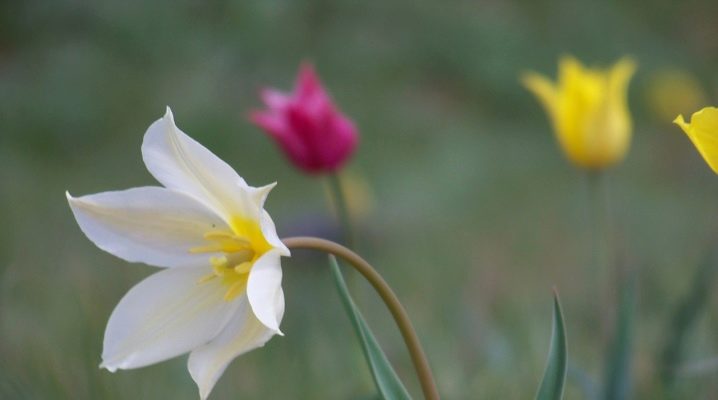
Schrenk's tulip (Tulipa Schrenkii) is a wild flowering crop found in steppe and semi-desert areas. In the regions of Russia, the plant is better known under the name Tulipa Gesneriana. The flower gained its popularity for the varied color of the buds, unpretentiousness and uniqueness. Spring bloom paints the steppes in white, yellow, red, pink, burgundy shades.
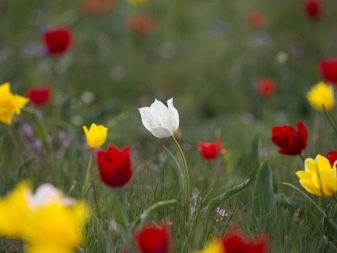
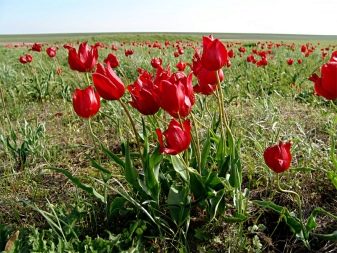
Short description
The tulip growing in the steppes and meadows got its name in honor of the German (however, it had Russian roots) scientist-breeder Alexander Ivanovich Schrenk, who was a researcher of the northeastern part of European Russia. He discovered his find in 1873 in the vastness of Kazakhstan. The plant he saw seemed fragile and delicate to him. It had a beautiful bud with a bright hue.
On the territory of Russia, the Schrenck tulip is found in European regions: in the southeast of the Voronezh region, as well as in the Saratov, Astrakhan, Volgograd, Samara and Orenburg regions. Some specimens have taken root even in Western Siberia, the Urals, Kalmykia. In addition, the culture grows in the southeast of Ukraine, in the southern Crimea, as well as in Kazakhstan, Iran and the People's Republic of China.

From the point of view of botany, the Gesner tulip is a herbaceous bulbous perennial (ephemeroid), medium flowering. Represents the Liliaceae family of the genus Tulip. Outwardly, the flower is small. Peduncle height reaches 40 cm, leaves - about 20. Peduncle - erect, has a smooth surface, its shade is saturated green. Closer to the bud, part of the stem is colored dark red, sometimes with a slight blue tint.
The foliage is greenish, there is a slight bluish tint. As a rule, 3-4 oblong leaves are located on one flower. One rises from the ground, the rest envelop the peduncle at the very base of the bud. The leaves are wavy at the edges, directed in different directions. The bud is cupped and about 7 cm high. Petals (length from 2.5 to 5.5 cm) with rounded, sometimes slightly pointed edges. Their total number is no more than 6.
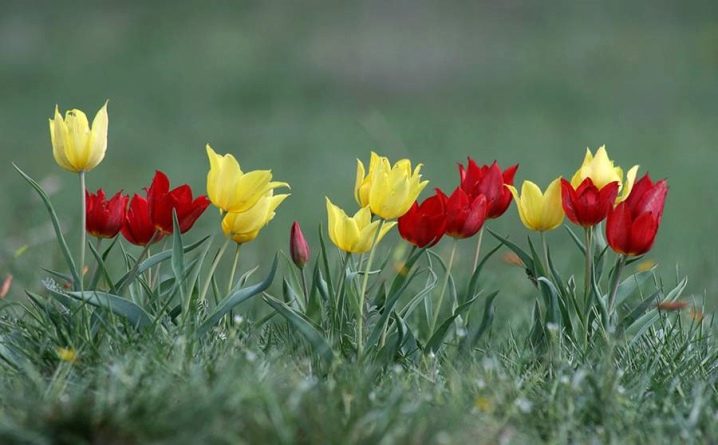
Gesner's tulip shows different colors during the flowering period: it can be white, yellow, orange, lilac-pink, slightly burgundy, sometimes even goes into purple. More often there are specimens with a mixed shade - they are called variegated - for example, the petals are painted in one color, the center and edges - in another.
The stamens are half as long as the perianth. Bulbs of wild tulips are small: about 3 cm. The shell is slightly skinned, dark. It resembles an egg in shape. On the outside, the bulb is covered with scales of a gray-brown shade. During growth, it goes deep into the soil, for the period of its entire life it forms one baby.
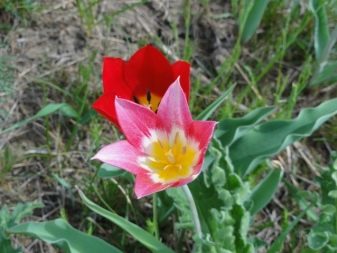
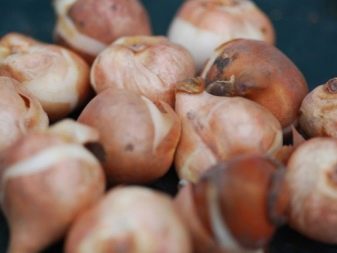
General characteristics
- a wide range of bud colors (monochromatic and variegated);
- the shape of the leaves is narrow, oblong, lanceolate, the edges are wavy, the leaves are scattered to the sides;
- flowering - average (falls at the end of April and lasts all May);
- reproduces only by seeds (ripening ends in June);
- blooms for the first time 6 years after seed germination.
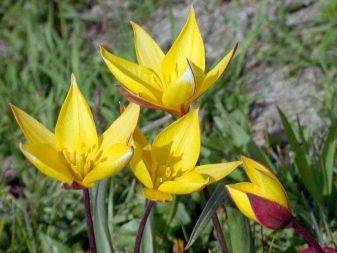
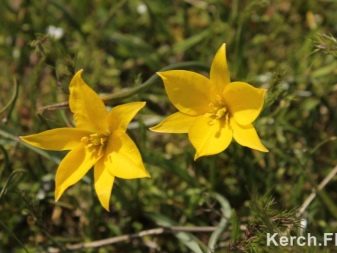
Flowering and reproduction
The Gesner tulip is a medium flowering crop. The flowering process is influenced by weather conditions. Usually, Schrenck's tulip prefers areas with snowy frosty winters. Suitable weather in summer is warm, sunny with little rainfall.
Weather permitting, the plant begins to bloom around April or early May. Duration - 1-2 weeks. With high humidity in spring, the buds bloom en masse, and in dry weather, not all bulbs are able to release flower stalks.
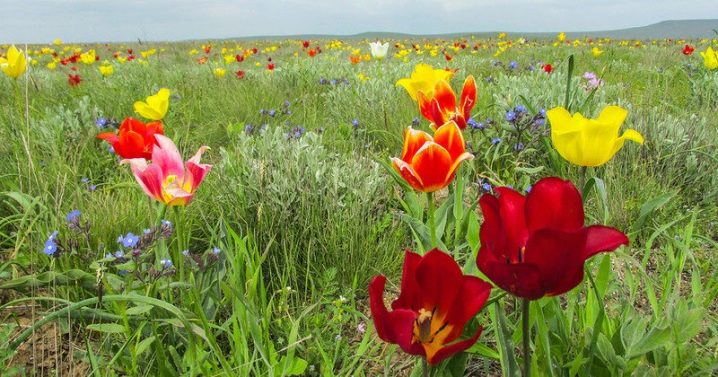
At the end of the flowering period, a so-called box with seeds is formed (total length - 4 cm), where there are 3 valves. The number of seeds in one copy reaches 250 pieces. Some time after ripening, this box dries up, then bursts, some of the seeds fall on the ground, and some are carried by the wind. The first flowers appear 6–7 years after the grain has given its first roots. Consider the growth process of the Gesner tulip in more detail:
- 1st year - the formation of the bulb and the cotyledonous leaf, the bulb needs to be deepened into the ground by 4–5 cm;
- 2nd year - replacement of the cotyledon leaf with a real one, the bulb deepens even more;
- 3-5 years –The growth of the bulb, it becomes more voluminous, a pair of leaves is formed;
- 6th year - the end of the growing season, the formation of an adult plant: the process of regrowth of 3 leaves, peduncle, bud is in progress, seeds are being set.
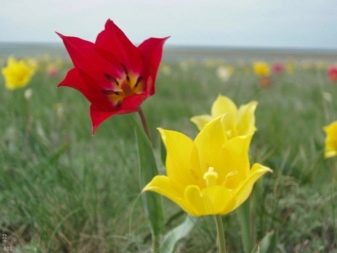
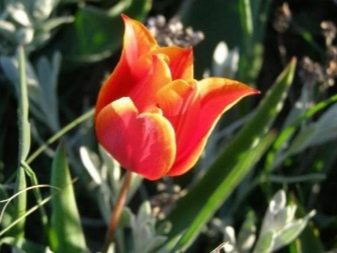
Can I grow at home?
According to official figures, the wild Schrenck tulip is considered a rare unique plant that is threatened with complete extinction. The extinction of a rare species occurs due to a number of reasons:
- regular plowing of land;
- forest fires;
- digging out tulip bulbs for medical use;
- crop damage due to grazing;
- soil contamination with industrial waste;
- bulk cut flowers for sale.


Today, the wild Schrenck tulip is listed in the Red Book. This means that digging, attempting to reproduce and other manipulations are prohibited by law. To preserve the unique appearance of a flowering plant, the following activities are carried out:
- so-called green patrols are created during flowering;
- campaigning for the protection of wildlife;
- a ban was announced on the collection of bulbs, buds, boxes with seeds;
- violation of protective measures is followed by an administrative penalty in the form of a fine.
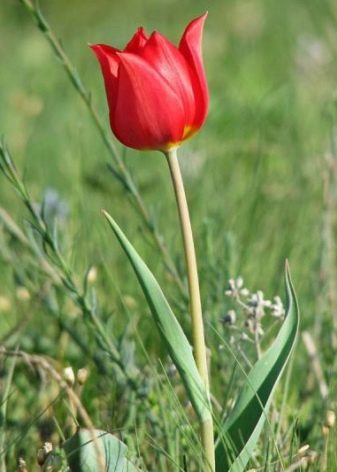

To maintain the number of the species, it is cultivated in botanical gardens. However, attempts to propagate a plant are not always successful. In addition to the fact that growing at home is illegal, indoor conditions will not ensure the full growth and development of a unique flower. According to experts, growing the Gesner tulip in the garden is impractical for the following reasons:
- it reproduces exclusively by seed;
- under favorable conditions, the tulip blooms in 6-7 years, sometimes flowering does not occur at all;
- at the end of the season, the bulb dies off, only 1 formed baby comes to replace it, and this, in turn, will lead to flowering only after a few years.
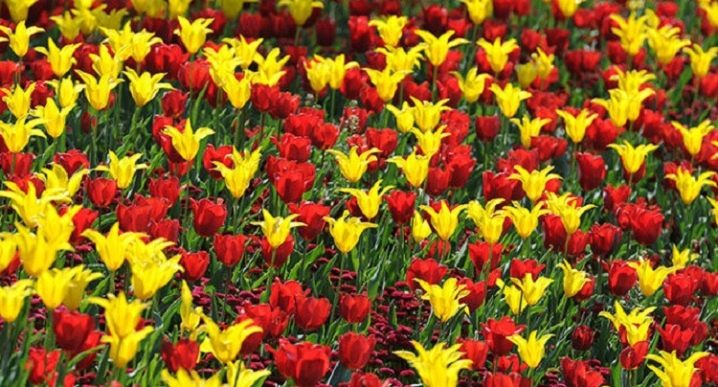
Today there are many varieties of the Gesner tulip. Florist scientists argue that hybrid varieties are not inferior in beauty to a wild-growing species. In addition, they are suitable for indoor cultivation in the field or in pots. The wild tulip discovered back in 1873 by Alexander Ivanovich Shrenk amazes and amazes florists from all over Europe with its sophistication. The representative of the Tulip genus is a living decoration of deserts and steppes.
The following video shows the flowering of Schrenk tulips in the Urals.







































































































The comment was sent successfully.